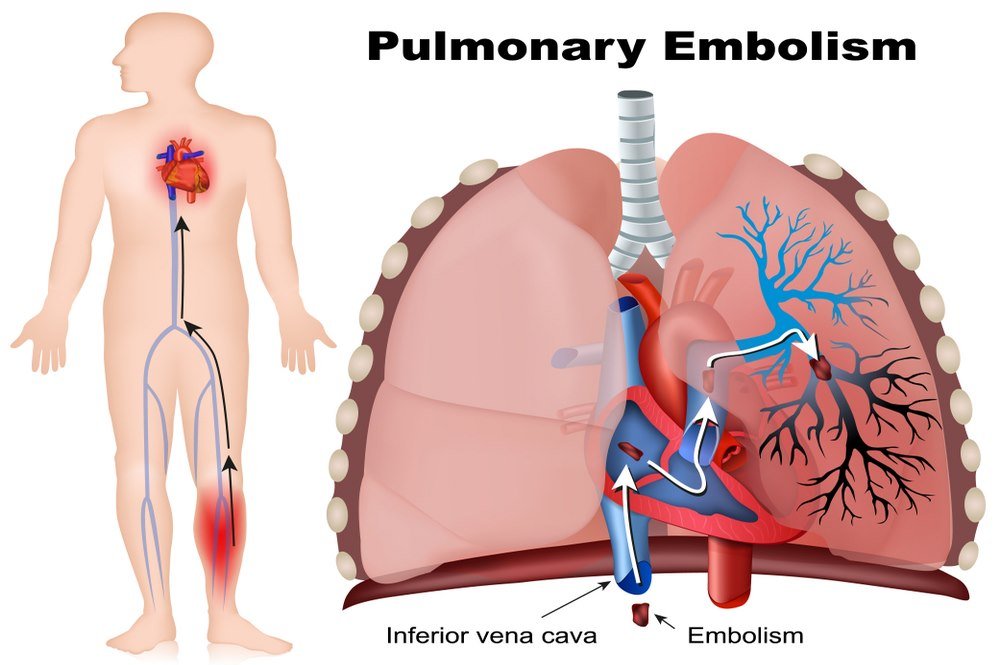Pulmonary embolism (PE) is a condition that results from the blockage in one of the pulmonary arteries in lungs. In majority of the cases, pulmonary embolism results due to the blood clots that move from deep veins in the legs towards the lungs and in rare cases from vein in other parts of the body causing deep vein thrombosis. As the blood clots from veins block the normal blood flow to the lungs, pulmonary embolism can be a life-threatening condition for a person suffering from it. However, immediate treatment greatly minimizes the risk of death and other severe conditions. Taking safety measures to avoid blood clots in your legs will keep you safe from pulmonary embolism. [1]The blood clot causing the blockage in case of pulmonary embolism is known as a thrombus that lodges in pulmonary artery in the lung and cause blockage of blood to the lungs. Pulmonary embolism typically arises from a blood clot originating in the deep venous system especially of the lower extremities. However, the blood clots rarely originate from the upper extremity veins, right heart chambers, pelvic, or renal veins. After moving to the lungs, large blood clots can float at the bifurcation of the lobar branches or the major pulmonary artery causing hemodynamic compromise. The underlying cause of pulmonary embolism is still unknown but there are certain risk factors which contribute to the development of pulmonary embolism. The blockage of blood flow due to thrombus can cause severe problems like blockage of other arteries in the body which can be deadly as blood oxygen levels start running low.
Several studies indicate that if pulmonary embolism goes without a proper treatment, there is a significant rate of mortality in patients with acute form of pulmonary embolism which is as high as 30%. Whereas, the mortality rate for the patients with a proper treatment after early diagnosis is almost 8%. Nearly 10% of the patients with acute pulmonary embolism die a sudden death. Two out of every three patients of pulmonary embolism die within 2 hours after the manifestation of severe symptoms of the condition. Pulmonary embolism causes a lack of blood flow which in turn leads to the damage and scarring of lung tissue. It causes low levels of oxygen in the blood of a patient with pulmonary embolism which can harm other organs in the body as well.

The formation of large blood clots can rapidly cause severe life-threatening issues and even death in patients with severe form of pulmonary embolism. A majority of the patients with pulmonary embolism recover entirely within several months to weeks without noticeable complications or any long-term side effects. However, there is a chance that long-term problems can occur which leads to a wide range of mild to severe symptoms. According to the doctors, the blood clots might also travel from a deep vein in the legs to the lungs, which is another conditions known as deep vein thrombosis (DVT). Deep vein thrombosis possibly arise due to longer resting of legs like during a long drive or flight and might also happen in case of patients who are on bed rest for longer duration. [2]

